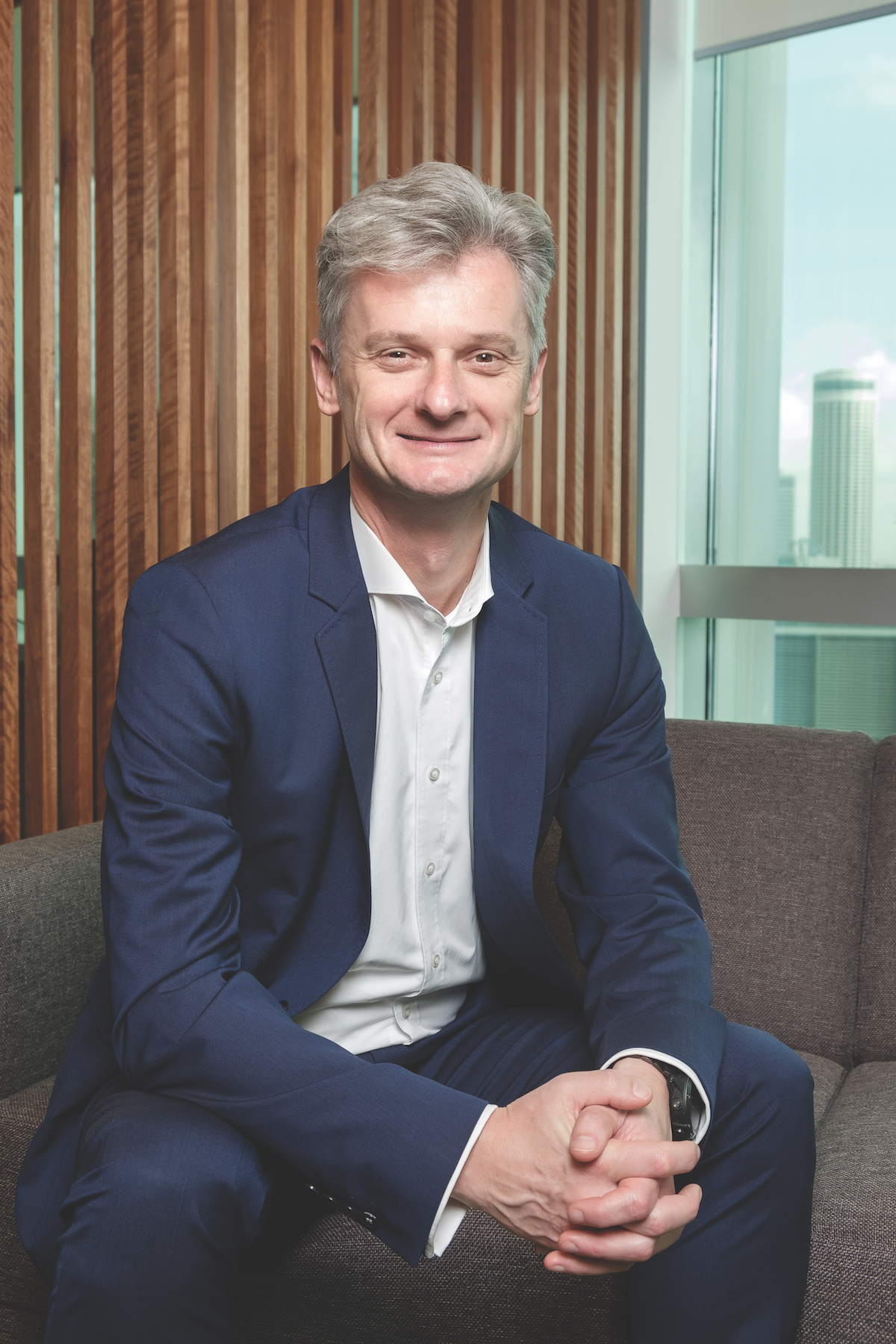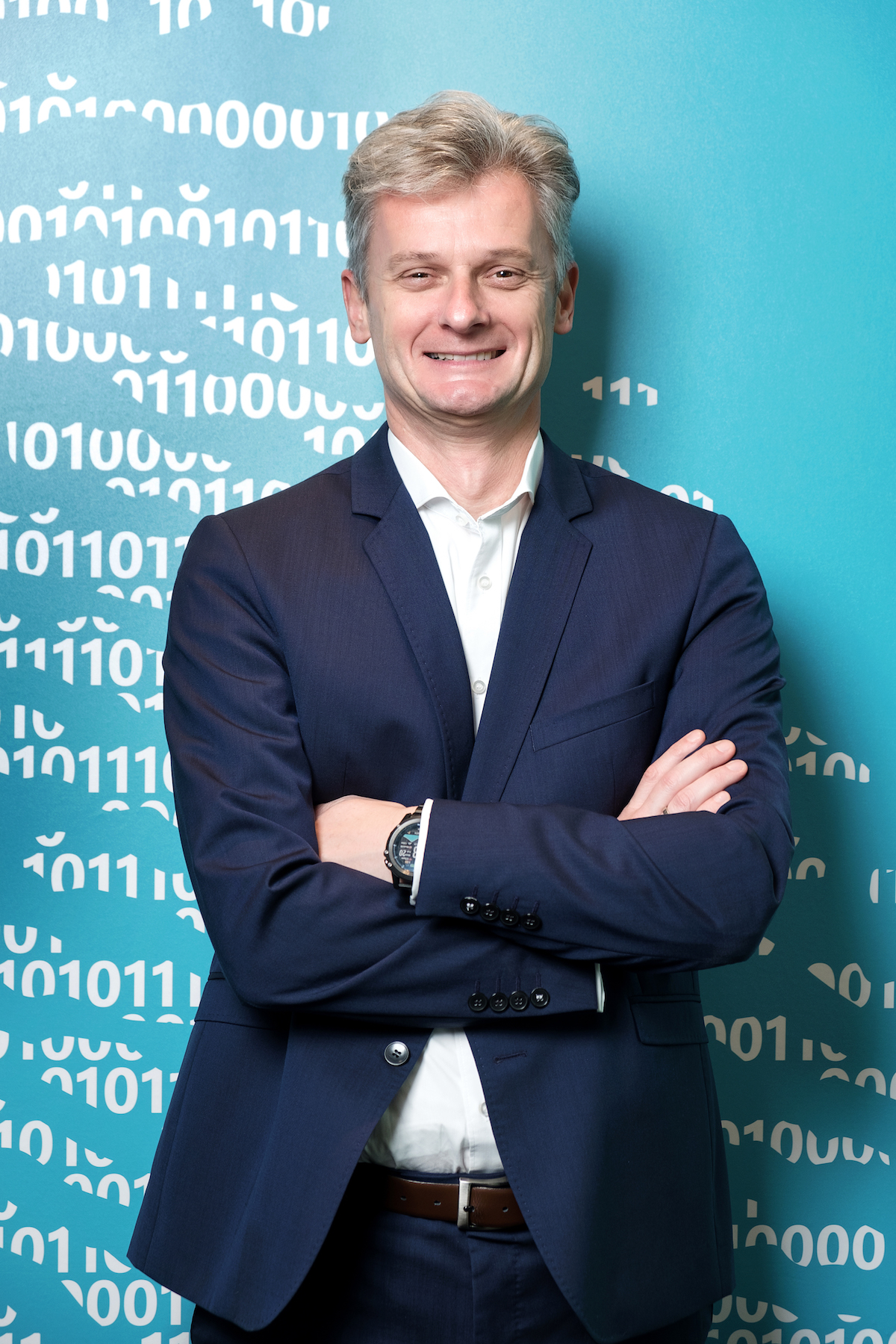When Microsoft Asia President Ralph Haupter is asked about what he learned from his experience in China that might prove useful for other Western businesses eyeing potential opportunities in the Asian heavyweight, he laughs. “Many businesses try to ‘crack’ the code of the Chinese market, often with varying degrees of success.” He then pauses to think before offering up 3 pieces of advice for those who dare to dream of doing business in China:
“First of all, you need to have some conviction and belief in what you do. Second, I think you want to be a good listener and understand what is really going on so that you can make the right decisions. And third, I would say it’s important to note: whatever you do in a country the size of China, you need to have a long-term perspective.”
A partnership that’s paying off
Microsoft has certainly taken a long view on China. Founder Bill Gates first opened an office in Beijing in 1992, and it has invested 2 decades into expanding its business across the country.
Today, that long-term investment in China is reaping benefits for Microsoft. With the support and guidance of the Chinese government and working in collaboration with key Chinese business partners, Microsoft has forged ahead in one of Asia’s most challenging markets.

“We were the first multinational company to bring cloud technology to China. We did it with the partnership of a Chinese company and also with the support of the Chinese government on how to develop and frame an environment for cloud computing in China.”
It has also developed its gaming footprint on the export side by working with a Chinese company that was developing content for a Bluemix ecosystem at the same time. “That was a different approach we were taking at that time.”
And via its joint venture with China Electronics Technology Group (CETC) Asia, a well-respected IT company, working on the Windows operating system technology has yielded significant insights and skill transference. “Apart from the technology innovations, at the same time we have done a lot with the different provinces in China. We have been able to engage with different problems on the different specialties of big data, internet and infrastructure.” In China, it has also found a partner with reach and access in markets. “If you look at Surface now, it is a very well respected product with high take-up in China,” he says. “A big portion of our business is actually through online in China, which is pretty unique in our model.”
Perhaps the most significant aspect of its relationship with China has been partnering in innovation. “What we have found with China is a partner who is not only keen on innovation but is a leader in innovation,” says Ralph.
The fact that China is now home to Microsoft’s largest research and development facility outside the US also has positive ramifications for the rest of the Asian community. “A lot of the things that we are doing in Singapore or India, and even in Japan, are sourced out of the R&D facility in China,” says Ralph. “It shows that with more than 30 years in the region, Microsoft has the capacity and skills and the commitment to understand what is actually needed in the different regions. I feel that is a very good thing about the way we operate as a company,” he says.
The digital transformation challenge
Of course, his position as the President of Microsoft Asia currently places him at the junction of countless discussions about how to best handle the digital transformation challenge. With companies the world over grappling with the implications and opportunities offered by digitisation, it’s no surprise that is also preoccupying the minds of CEOs and other C-suite executives throughout Asia–Pacific.
Ralph has a unique window into that preoccupation as he meets with the leaders of companies everywhere — from a retail business in Sydney, to a manufacturing group in Indonesia, or a production company in Malaysia. As he explains, executives are generally thinking about the digital transformation journey in 1 of 2 ways. There are companies that understand they have access to a huge amount of data and are curious about how they can use it to improve business performance. Then there are the companies that are seeing digital as an opportunity to drive cultural change within the organisation. “I think that trend is even more prominent in Asia where young populations of employees are using digital 24/7,” he says.
For instance, he continues, at 1 of the top companies in Malaysia, the CEO is looking at how to change the workplace culture by harnessing the natural behaviour of millennials and their agility in using information data.
Those challenges are motivating “very thoughtful and deep discussions about how companies go on this journey of digital transformation,” says Ralph. “It is literally going to be a fourth revolution from an industry perspective.”

A mobile first, cloud first dynamic
Having been based in Asia for more than 5 years, Ralph is a keen observer of the peculiarly Asian flavour of the digital transformation revolution. As he highlights, the integration of mobile and mobile connection, internet and cloud in Asia is progressing very rapidly. In some markets, that is also being supported by strong investment by government in infrastructure, broadband access and education programs. The product of those factors is a “very dynamic, very aggressive” take on digital transformation. “The willingness to disrupt business models in Asia — compared to many other markets — is much higher and the opportunity appetite is much greater, and I think the risk-taking is also to some extent much higher, as they question existing business models and go much more for a digitised business model.”
It’s an approach that sits comfortably with the Microsoft world view of mobile first and cloud first.
Although Ralph is reluctant to treat Asia as 1 homogenous market, he notes that there are a couple of market behaviours across Asia that are dominating: “In some markets, we
see a move from a pure production structure to a real supply structure, and then you go on to be a global player. You change business models quite easily. That is where we see massive demand for digitisation.
“If you think about Malaysia, Indonesia and Vietnam, online distribution in these markets is almost a single digit,” he says. By comparison, some businesses in China have 60–70 per cent of their product distribution online. So just this shift itself is a massive kind of mobile-first, cloud-first dynamic.”
He is also observing different patterns emerging in a lot of markets. “You have very different buckets of innovation coming forward in different markets,” he says. “If you think about China, it is obviously known for its hardware and IT infrastructure innovation, but more and more we see Chinese companies making applications and experiences part of their business model.” While India has been known for its IT service providers, companies are now increasingly producing business solutions, he adds.
In Malaysia, he highlights a session with companies producing applications: “I would say that 90 per cent have the character of start-ups, but 80 per cent of them are already global.” He’s seeing plenty of momentum in technology, such as blockchain in Asia. “There is a lot of momentum on that path in Asia based on a very different fintech structure and payment structure that we have through mobile-first and cloud-first behaviour,” he says.
“People using the Microsoft cloud have the opportunity to collect, in a very simple way, many millions of pieces of data.”
Technology creating cultural change
Naturally, Microsoft is very much looking ahead to how it can harness the opportunities contained in the rapidly evolving Asian markets. There, Ralph says, Microsoft has 3 “bold ambitions” for how it can differentiate itself in the market and assist companies on their digital transformation journey.
“We are very ambitious in our thinking about productivity and pushing the envelope on reinventing productivity,” he says, adding he sees this in terms of both an individual’s personal productivity and their productivity as an employee within an organisation. He returns to the example of the CEO of the Malaysian company wanting to use digital transformation to drive cultural change. “He is implementing an enterprise resource planning system now, and he knows that won’t yield any returns if he is not able to find a way to drive innovation and drive a cultural shift in his company.
“The way we think about productivity innovation is that we bring technology to a company so that they can really shape and change their culture.” For instance, he says that having the full video and engagement collaboration experience with the platform can help companies with the very specific need to bring people together working on specific projects or working on specific dynamic needs by customer. “They can group it by theme or they can group it by channel, so this is a very different approach we are taking.”
In turn, the fact that it is delivering that productivity experience as a cloud solution has another by-product that is differentiating the Microsoft approach to digital transformation. “By delivering it as a cloud solution, we actually serve the need for trust and the need for security,” he says.

To illustrate the importance of that, he points to the recent experience of enterprise companies in Vietnam that were impacted by massive cyber security breaches. It’s an experience that meant security was top of mind for executive teams in Vietnamese companies when Ralph visited recently. “At literally each meeting, the executives were asking me what can be done to help them to have a secure operating environment for all their employees.
“So that is what we mean by having reinvented productivity on these very stretched angles of moving towards being agile and being collaborative, but on the other hand being best of breed and making sure that no matter what part of the planet you operate in or what you do, you work in a secure and trusted environment.”
One sector proving particularly receptive to that combination of agility and security is the finance and insurance industry, he observes. “In many countries where the model involves engaging through agents and third parties, and where there is a lot of sensitive data, we are seeing plenty of demand for help from our cloud offering and our productivity offering.”
Azure IOT & Windows 10
The second ambition Microsoft has for helping companies with the digital transformation journey is to provide them with an ‘intelligent-cloud’ environment, which it defines as “the back-end infrastructure that drives all of your enterprise mobility.”
“We are offering more than just hosting a computer power and a storage power,” Ralph explains. “All the current engineering focus is on providing services for customers that give them the opportunity to use technology to get smarter. People using the Microsoft cloud have the opportunity to collect, in a very simple way, many millions of pieces of data in the context of the Internet of Things,” he says.
In technical terms, what is known as Azure IOT suite, can help companies gather a “world of intelligence,” he says, adding: “Basically, it’s an environment where companies can have predictive analytics helping them manage their assets and build their business models.”
It’s a capability that is being sought out by everyone from government to police and the military. “We have all of these people asking how we can help them with technology to operate in a secure environment.”
The third ambition Ralph unfolds relates to enhancing the experience on the personal computing side. “With Windows 10, we have laid a platform and an infrastructure where we are expanding and focusing on the user’s personal experience.” That means it includes 3D printing, 3D video, events and a gaming platform.
“We are convinced that gaming is a way to engage very differently,” he says, highlighting its recent launch of Minecraft for education. “There is a lot of understanding around how people use different devices, and we are convinced that we can be the operating platform for these devices and experiences.”
These are 3 big ambitions that Ralph believes hold the key to Microsoft’s ability to differentiate itself in the constantly changing Asia–Pacific markets. “In all of these ambitions, we are bringing customer value, security and trust, and innovation into the centre of the discussion, while being an asset for our partners to build smart solutions for our customers.”
It’s a challenge, realising those ambitions in Asia–Pacific, but one that Ralph is equally boldly taking on. “I feel we are in fantastic times as an industry, and I feel very excited to be part of a company that has a mission statement to empower people and organisations to achieve more in a market like Asia. We have an environment both from a market perspective but also from a company perspective where we have fantastic assets in our hands.
“I believe we can help companies to accelerate their growth and their potential, and we can offer a platform that can help Asian companies, small or big, no matter what industry they are in, to be in a better position to be a global player.”



